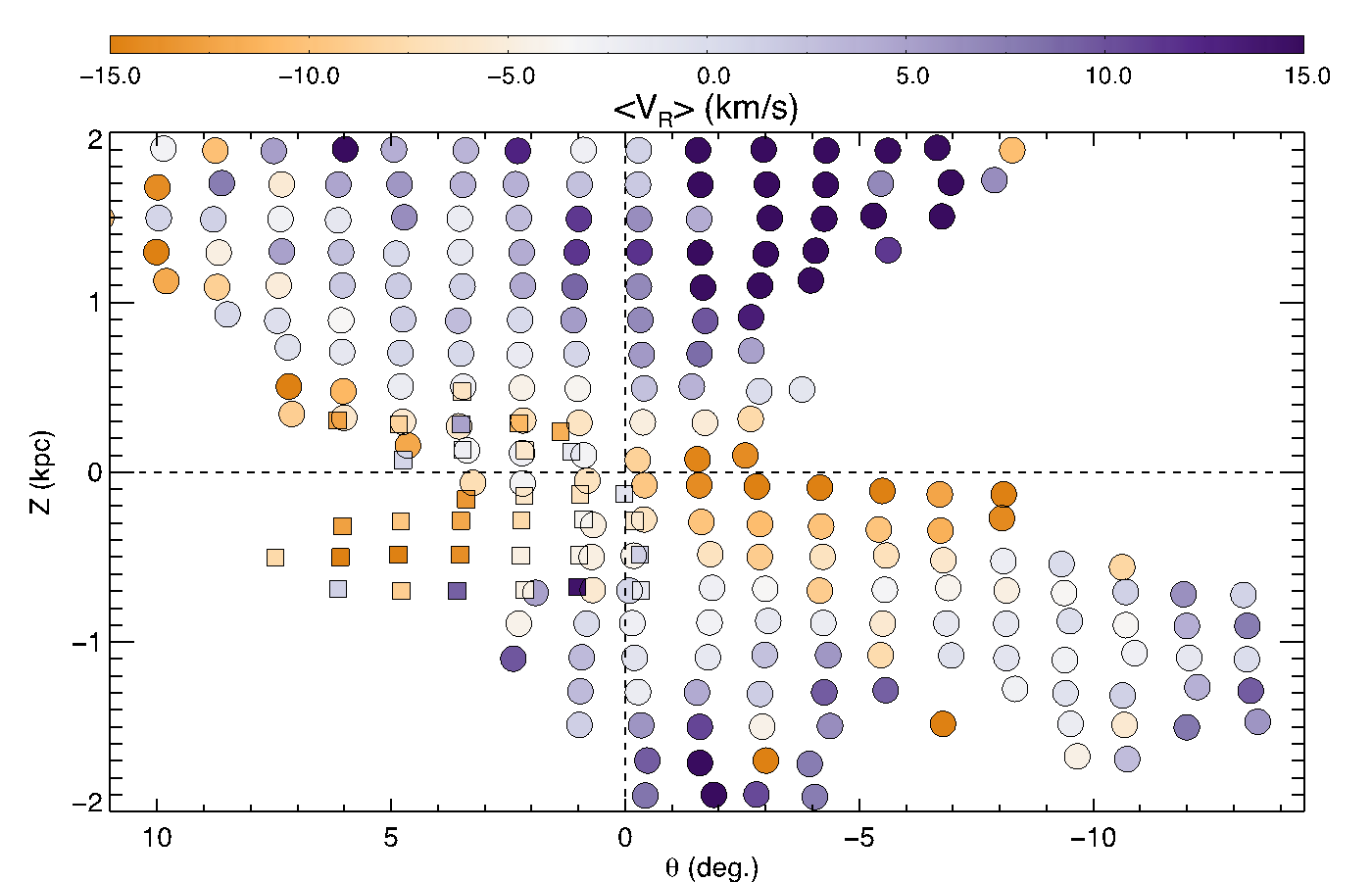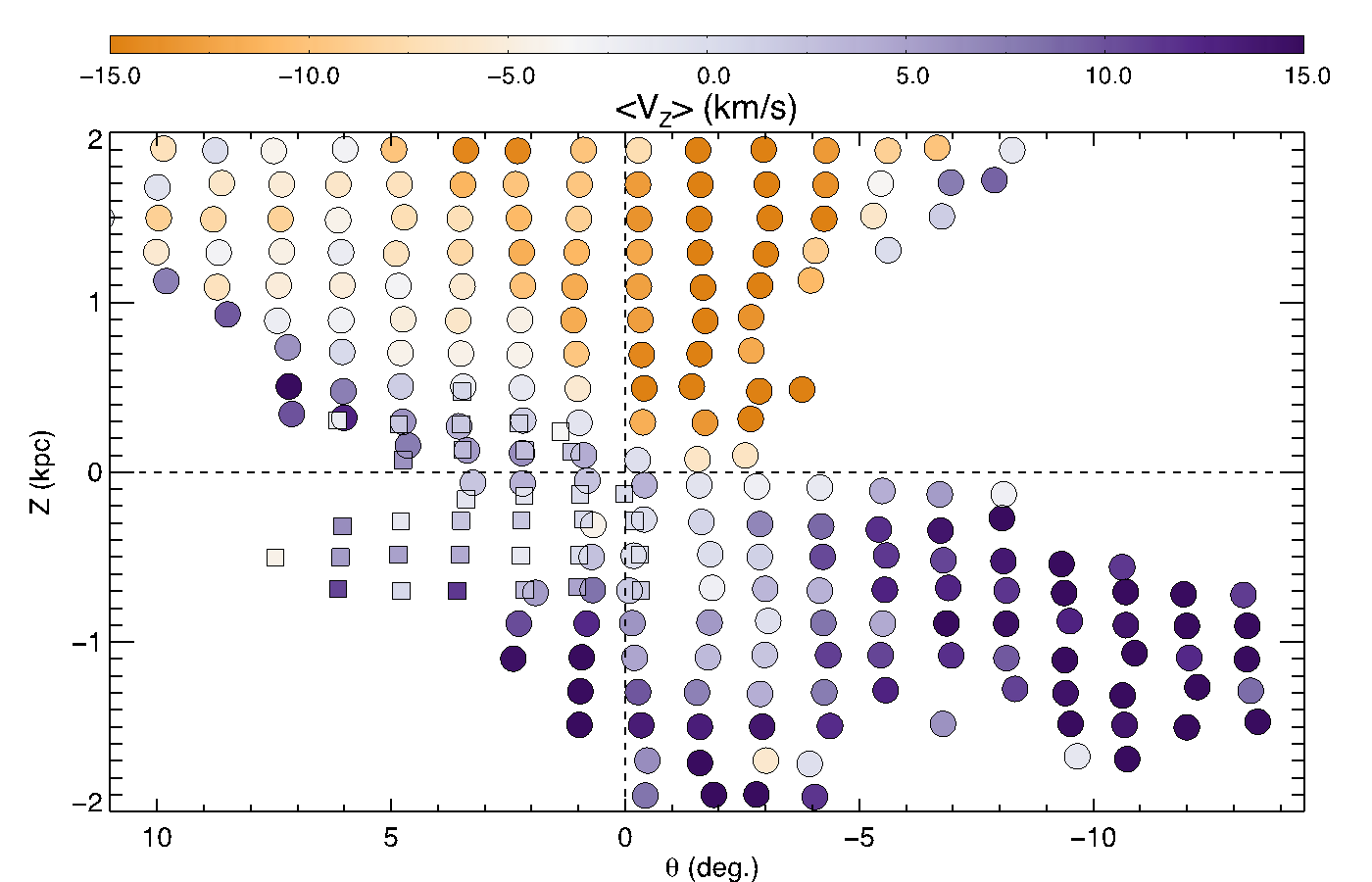You are here
Substructure in bulk velocities of Milky Way disk stars
Most of the stars in the Milky Way Galaxy are located in a flat, pancake-like disk that spins rapidly. The Sun is near the center of this disk, so that most nearby stars are expected to be rotating in roughly circular orbits about the center of the Galaxy. Using a sample of almost 400,000 stars near the Sun that have been observed with the Guoshoujing Telescope for the LAMOST survey, a team of researchers found that things are not moving in such simple ways. Jeffrey CARLIN (Rensselaer Polytechnic Institute, New York, USA) and his co-authors present these results in a paper that has been accepted for publication in the Astrophysical Journal Letters. The team used velocities of stars measured from LAMOST data to show that stars above the middle of the disk are on average moving away from the center of the Galaxy, and downward toward the disk, and stars below the disk are moving in the opposite direction. This can be seen in the figures below – each dot in the figures represents the average position and velocity of many hundreds of stars measured by LAMOST. The horizontal axis represents the angle around the disk as seen from the center of the Galaxy, and the vertical axis shows the distance from the center of the disk. Each dot is assigned a color that represents the average velocity of the stars in that position. Dark purple colors mean that stars are moving away from the center of the Galaxy, while orange colors mean stars are moving toward the Galactic center (white or light colors are in between these extremes, near zero). In the figure, it is clear that there are large regions where all of the stars are moving away from or toward the center of the Galaxy. This is not what is expected if the disk is simply rotating in circular motion.

A similar figure is seen below, with points showing the motion in the vertical direction. In this plot, purple colors mean stars are moving up, and orange colors are stars that are moving down. Again, this is not what is expected for stars that are rotating with the disk.

In the paper, which can also be found at http://arxiv.org/abs/1309.6314, Carlin and his co-authors suggest that these structures in the Milky Way disk are the result of an encounter with another galaxy. When a dwarf galaxy passes near the disk of the Milky Way, it disturbs the disk, and excites waves and other motions in the stars of the disk. Thus, the movements of stars near the Sun tell us about things that are happening much further out in the distant regions of our Galaxy.
